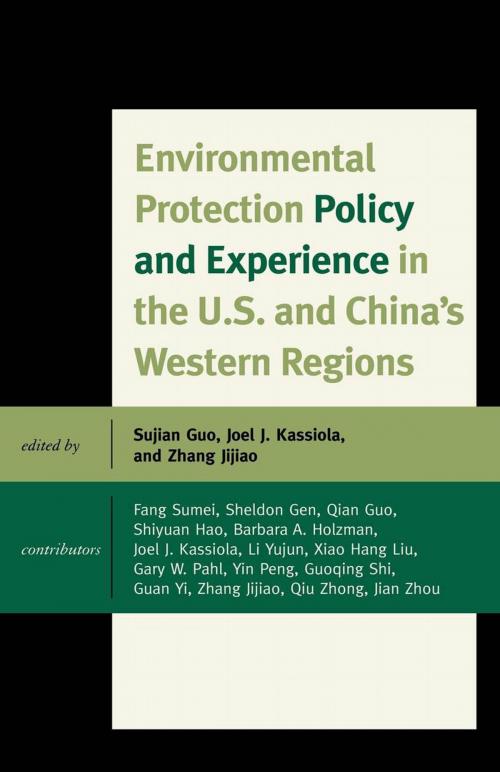Environmental Protection Policy and Experience in the U.S. and China's Western Regions
Nonfiction, History, Asian, Asia, Social & Cultural Studies, Political Science, International, International Relations, Americas, United States| Author: | Sheldon Gen, Qian Guo, Shiyuan Hao, Barbara A. Holzman, Joel J. Kassiola, Xiao Hang Liu, Gary W. Pahl, Yin Peng, Guoqing Shi, Fang Sumei, Guan Yi, Li Yujun, Qiu Zhong, Jian Zhou | ISBN: | 9781461633389 |
| Publisher: | Lexington Books | Publication: | June 14, 2010 |
| Imprint: | Lexington Books | Language: | English |
| Author: | Sheldon Gen, Qian Guo, Shiyuan Hao, Barbara A. Holzman, Joel J. Kassiola, Xiao Hang Liu, Gary W. Pahl, Yin Peng, Guoqing Shi, Fang Sumei, Guan Yi, Li Yujun, Qiu Zhong, Jian Zhou |
| ISBN: | 9781461633389 |
| Publisher: | Lexington Books |
| Publication: | June 14, 2010 |
| Imprint: | Lexington Books |
| Language: | English |
China is a multiethnic country with vast territory, a land of diverse ecosystems. With the drive for industrialization in China and the implementation of 'western grand development' strategy in western regions, both governments and people face great challenges in environmental protection and sustainable use of biodiversity resources as a result of growing interaction between human activities and natural environment. To meet the challenges, governments in these regions need to adopt a series of important policy measures, not only to reduce industrial emissions, but also to return farmland to forests and pasture to grasslands and to implement measures of ecological migration to reduce human activities in ecological conservation areas. In this regard, China must not only learn profound lessons from industrialized countries but also search for international cooperation. The United States provides some good comparative case studies on the environmental protection, grassroots environmental management, and conservation policies in western regions This book attempts to address key questions about Chinese and U.S. environmental policies by looking at historical development of environmental protection and current environmental policy in the western regions of the two countries.
China is a multiethnic country with vast territory, a land of diverse ecosystems. With the drive for industrialization in China and the implementation of 'western grand development' strategy in western regions, both governments and people face great challenges in environmental protection and sustainable use of biodiversity resources as a result of growing interaction between human activities and natural environment. To meet the challenges, governments in these regions need to adopt a series of important policy measures, not only to reduce industrial emissions, but also to return farmland to forests and pasture to grasslands and to implement measures of ecological migration to reduce human activities in ecological conservation areas. In this regard, China must not only learn profound lessons from industrialized countries but also search for international cooperation. The United States provides some good comparative case studies on the environmental protection, grassroots environmental management, and conservation policies in western regions This book attempts to address key questions about Chinese and U.S. environmental policies by looking at historical development of environmental protection and current environmental policy in the western regions of the two countries.















